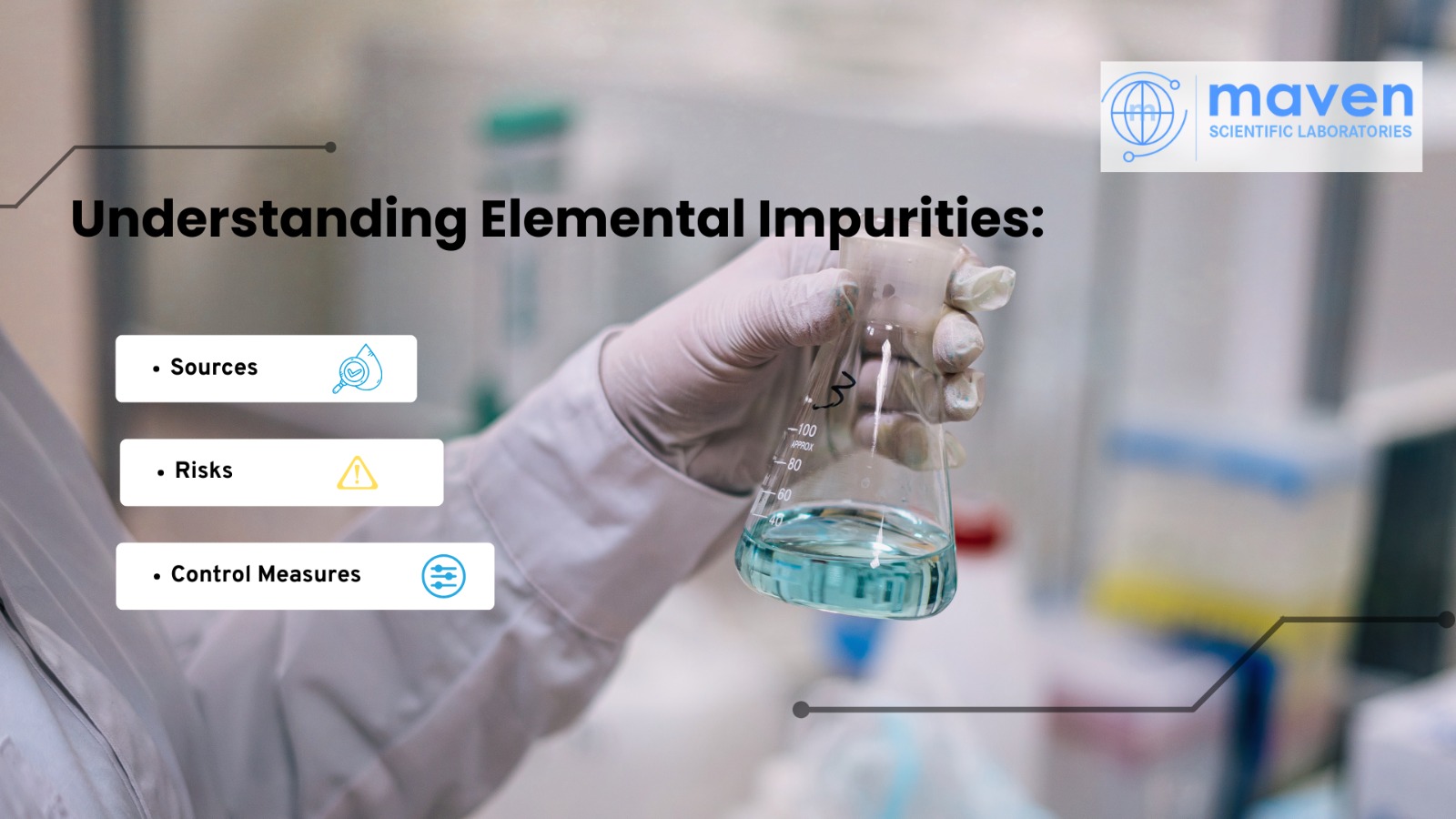
Understanding Elemental Impurities: Sources, Risks, And Control Measures
Introduction
Elemental impurities are a critical concern across various sectors, including pharmaceuticals, cosmetics, and food production. These impurities are trace elements or metals that may inadvertently enter products during manufacturing. While some of these impurities may be harmless, others can pose significant health risks. This blog will explore the nature of elemental impurities, their potential dangers, and effective control strategies to manage them, in line with regulatory guidelines.
What Are Elemental Impurities?
Elemental impurities are minute quantities of metals or trace elements that can accidentally contaminate products during their production. These impurities may come from several sources, such as raw materials, equipment, or environmental factors. When present in certain concentrations, elemental impurities can affect both human health and product quality. Common examples include:
- Heavy Metals
- Transition Metals
- Noble Metals
- Alkali and Alkaline Earth Metals
- Other Trace Elements
These impurities can vary in their toxicity levels and may accumulate in the body over time, potentially leading to adverse health effects. Regulatory guidelines, such as the International Council for Harmonization’s Q3D Guideline for Elemental Impurities, set acceptable limits to ensure safety and product quality.
Hazards Associated with Elemental Impurities
- Toxicity:
Certain elemental impurities, such as lead, mercury, cadmium, and arsenic, are known to be toxic to humans. Long-term or excessive exposure can lead to various health issues, including organ damage, neurological problems, developmental disorders, and even cancer. The impact of toxicity depends on factors like the type of impurity, its chemical form, exposure route, and duration. Guidelines like ICH Q3D provide specific permissible exposure limits to mitigate these risks. - Allergic Reactions and Sensitization:
Impurities like nickel and chromium can cause allergic reactions and sensitization in some individuals. These reactions may include skin rashes, itching, dermatitis, and other allergic responses when in contact with products containing these impurities. - Pharmaceutical Contamination:
Elemental impurities can adversely affect the quality and efficacy of pharmaceutical products. For instance, heavy metals in medications can reduce drug potency, degrade active ingredients, or alter chemical stability, which may compromise therapeutic efficacy and pose risks to patients. - Impact on Product Quality and Stability:
In non-pharmaceutical products, elemental impurities can affect quality and stability. For example, in the food and beverage industry, certain impurities may cause off-flavors, discoloration, or accelerated spoilage, leading to consumer dissatisfaction and potential health risks.
Control Strategies for Managing Elemental Impurities
Effective management of elemental impurities is vital for ensuring product safety and quality. The following control strategies, aligned with regulatory standards, can be employed throughout the manufacturing process:
- Risk Assessment:
Conduct a thorough risk assessment to identify potential sources of elemental impurities and evaluate their impact on product quality and consumer safety. This involves examining factors such as the product type, manufacturing process, raw materials, and intended use. Risk assessment is a key component of the ICH Q3D guideline, which provides a framework for identifying and controlling elemental impurities. - Good Manufacturing Practices (GMP):
Adhere to stringent GMP guidelines to minimize the risk of introducing or cross-contaminating elemental impurities during production. This includes maintaining clean and controlled manufacturing environments, implementing proper hygiene practices, and ensuring equipment and facility cleanliness. GMP compliance is essential for meeting regulatory standards. - Raw Material Control:
Implement strict control measures for raw materials to prevent contamination. This involves selecting reliable suppliers who meet quality standards and provide detailed documentation on the elemental impurity content of their materials. Analytical testing of raw materials can also verify their impurity profiles. - Process Optimization:
Optimize manufacturing processes to reduce the formation or introduction of elemental impurities. Adjustments to temperature, pH, and reaction conditions can help mitigate impurity formation. Regular process validation and monitoring can identify and address potential impurity sources. - Analytical Testing:
Utilize advanced analytical testing methods, such as inductively coupled plasma mass spectrometry (ICP-MS) or atomic absorption spectrometry (AAS), to detect and quantify elemental impurities. Routine testing of finished products and in-process samples helps ensure regulatory compliance and facilitates early detection of impurity-related issues. - Supplier Qualification:
Develop a robust supplier qualification program to ensure that raw materials are sourced from reputable suppliers. This includes evaluating their quality management systems, conducting audits, and obtaining detailed documentation on the elemental impurity content of their materials. - Cleaning Validation:
Implement effective cleaning validation procedures to prevent cross-contamination between production runs. Establish comprehensive cleaning protocols and testing methods to confirm the effectiveness of cleaning processes. - Documentation and Record Keeping:
Maintain detailed documentation and records of all activities related to impurity control, including raw material specifications, testing results, process improvements, cleaning procedures, and supplier information. This documentation is crucial for regulatory compliance and can be valuable during audits or investigations.
By adopting these control strategies, manufacturers can significantly reduce the risks associated with elemental impurities, ensuring product safety and quality while meeting regulatory requirements.
Conclusion
Elemental impurities are an important consideration across various industries due to their potential impact on consumer safety. Understanding their sources, risks, and control measures is essential for manufacturers to maintain product quality and regulatory compliance. By implementing robust testing and control procedures, industries can manage these risks effectively and safeguard consumer health. Ongoing research, development, and collaboration will continue to enhance our approach to managing elemental impurities in the future.
#ElementalImpurities #ProductSafety #Manufacturing #QualityControl #RegulatoryCompliance #Pharmaceuticals #Cosmetics #FoodSafety #TraceElements #HeavyMetals #ChemicalContamination #RiskAssessment #GMP #RawMaterialControl #ProcessOptimization #AnalyticalTesting #SupplierQualification #CleaningValidation #Documentation #PharmaIndustry #CosmeticIndustry #FoodIndustry #LifeSciences #ManufacturingExcellence #PublicHealth #RegulatoryStandards #Toxicity #ConsumerSafety







